Breaking down Bazball: The numbers behind England’s fourth-innings surge
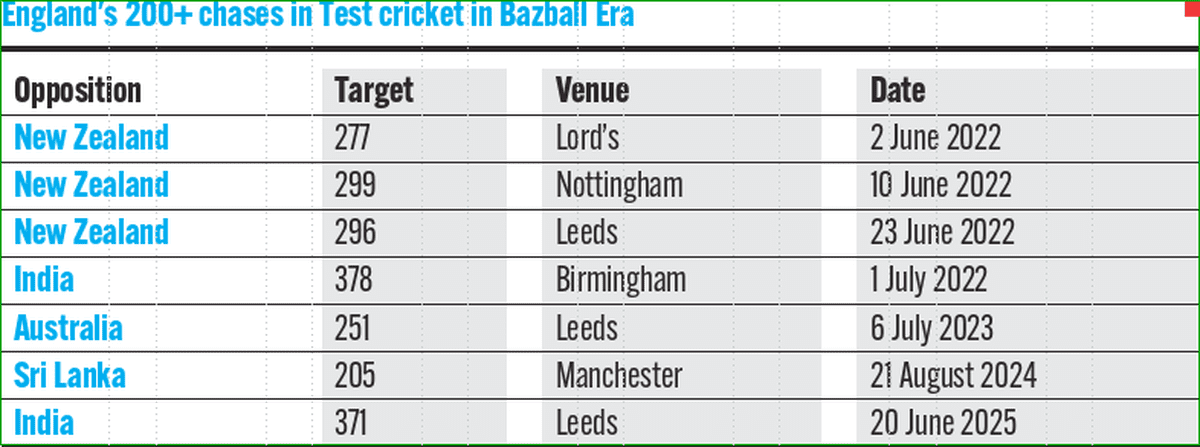
For long, Test cricket never regarded chasing prowess as a strategy or a strength to rely on. It was something teams resorted to when pushed into a corner – an act born of necessity rather than preference.
But England, under the leadership of coach Brendon McCullum and captain Ben Stokes, has rewritten that age-old convention, laying down a bold new template for Test cricket.

Since 2022, the Three Lions, embracing a hyper-aggressive batting philosophy, have welcomed the challenge of chasing in the fourth innings — and have reaped rich rewards.
England’s latest fourth-innings conquest — a thrill-a-minute, final-day heist against India at Headingley in the opening Test — marked its seventh successful 200-plus chase in the Bazball era.
That’s the most by any team in a four-year span in the history of Test cricket.
Tossing tradition
Right from the outset of McCullum’s tenure, England has made clear its preference for chasing in Tests.
Stokes and McCullum’s aggressive approach marks a sharp departure from traditional English Test strategy.
Until their leadership began, England chose to bowl first in home Tests only once every five matches. In the 539 Tests hosted in England up to that point, teams opted to field first on just 114 occasions.
Since June 2022, when McCullum took over as Test coach, no team has inserted the opposition more often — both in absolute numbers and proportionally.
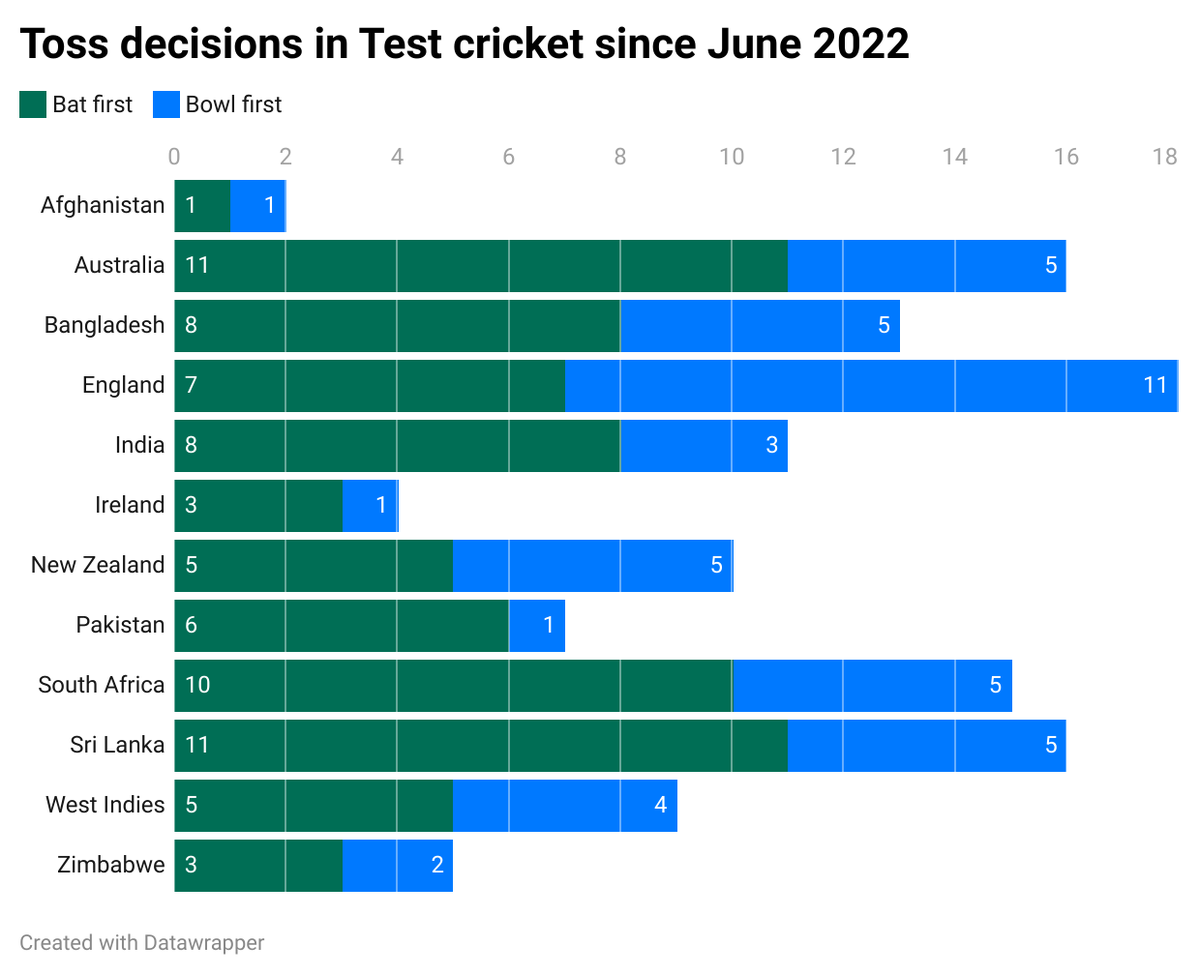
The only side that comes close is New Zealand, which has split its toss decisions evenly.
The first toss won by England under the Kiwi coach came in the second Test against New Zealand at Nottingham in 2022. Stokes chose to field, laying the groundwork for a successful chase — a method soon to be replicated with style.
Over the past four years, England has won more Tests (15) batting second than any other side, registering a staggering win-loss ratio of 3.00 in such matches.
In this period, England has twice entered the top 10 highest successful chases in Test history — both against India, first in Birmingham in 2022 and again in Leeds in 2025.
Only once in eight home Tests has England failed to chase down a target above 200 — at Lord’s during the 2023 Ashes. Despite Stokes’ valiant 155, the side fell 43 runs short of a 371-run target.
It’s worth noting that all of England’s 200-plus chases in the past four years have come at home. Its highest successful fourth-innings chase overseas under Stokes and McCullum remains 167, against Pakistan in Karachi.
All its attempts to chase a higher total away from home have ended in defeat — including a narrow one-run loss to New Zealand in 2023.
Dulling spin threat
A key element of England’s successful chases at home has been how it has subtly tweaked its conditions to reduce the impact of spin in the fourth innings, offering its batters a more familiar, less volatile surface.
Historically, chasing in the fourth innings was often considered futile due to pitch deterioration, which brought turn, bounce, and spin into play at crucial moments.
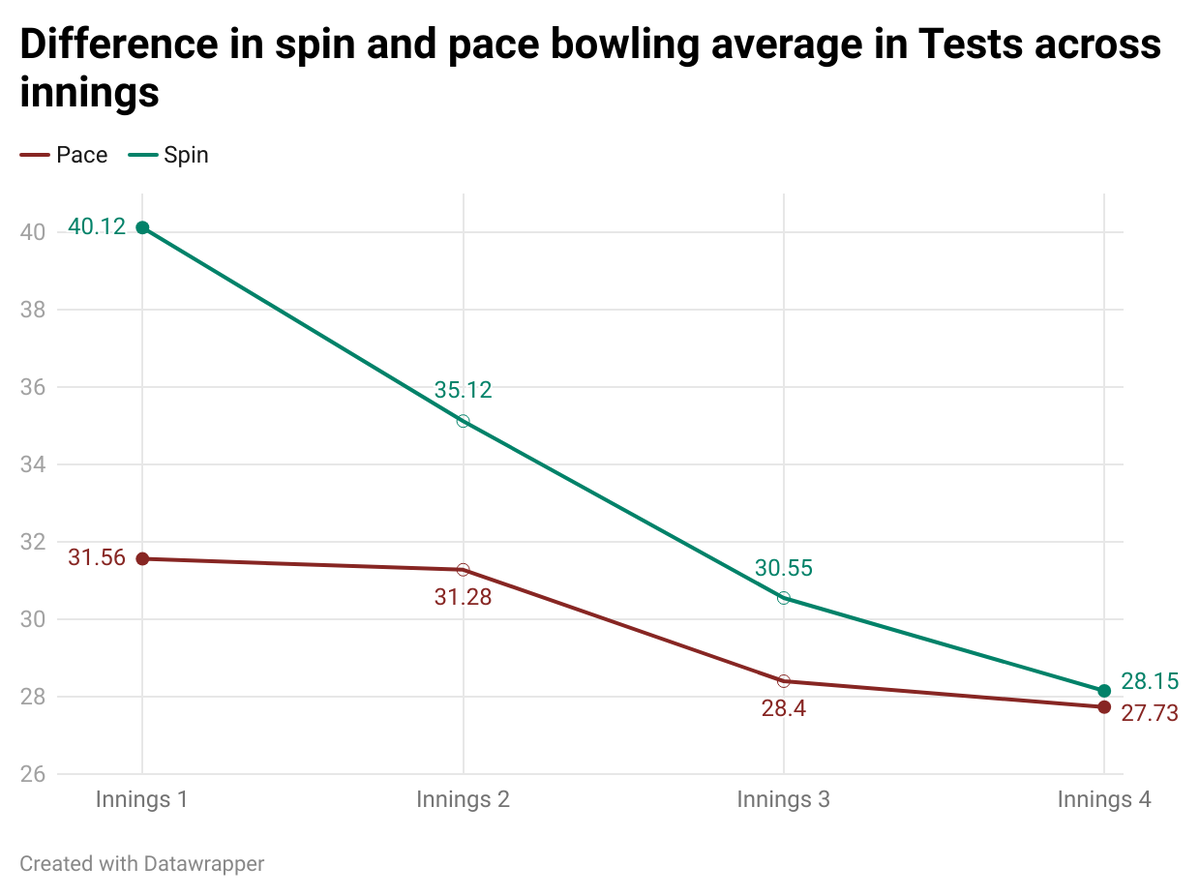
In Test cricket, spinners average worse than pacers in all four innings — but the gap narrows significantly in the final one.
Until 2022, spinners averaged 26.42 in fourth innings in England — the best figure outside India among nations to have hosted 100 Tests.
Since the advent of Bazball, however, that average has surged to 51.84 — the highest for any host country during this period.
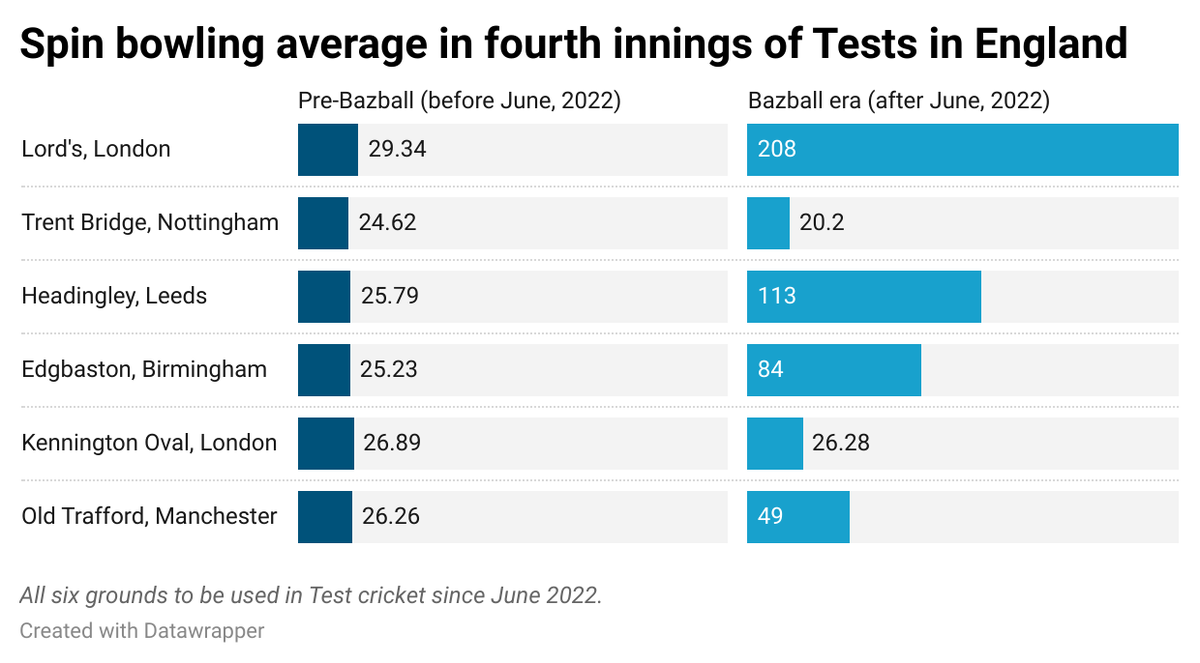
At Headingley, for example, spinners averaged 25.59 in the fourth innings prior to 2022. Since then, the figure has ballooned to over 113. Not surprisingly, three successful 200+ chases have come there in the Bazball era.
At Lord’s, spinners have averaged an astonishing 208 in the fourth innings across seven Tests, with the side batting second winning five of them.
England’s reluctance to chase in spin-friendly conditions is evident in its toss decisions abroad. In 2024, it played eight Tests in India and Pakistan. Of the four tosses it won, it chose to bat first in all of them.
Chasing a new era
England’s chasing success — though helped significantly by maximising home advantage — also reflects a broader trend in Test cricket: a growing frequency of successful fourth-innings hunts.
For much of Test cricket’s early history, a successful 200-plus chase was a rare feat — just 14 such matches occurred until 1950.
Gradually, that began to change — particularly with the advent of covered pitches, which preserved the surface for longer and gave batters more of a chance in the final innings.
This shift peaked in the 2000s, when teams chased down 200+ totals on 33 occasions — aided by flatter pitches that took bowlers out of the game across much of the world.
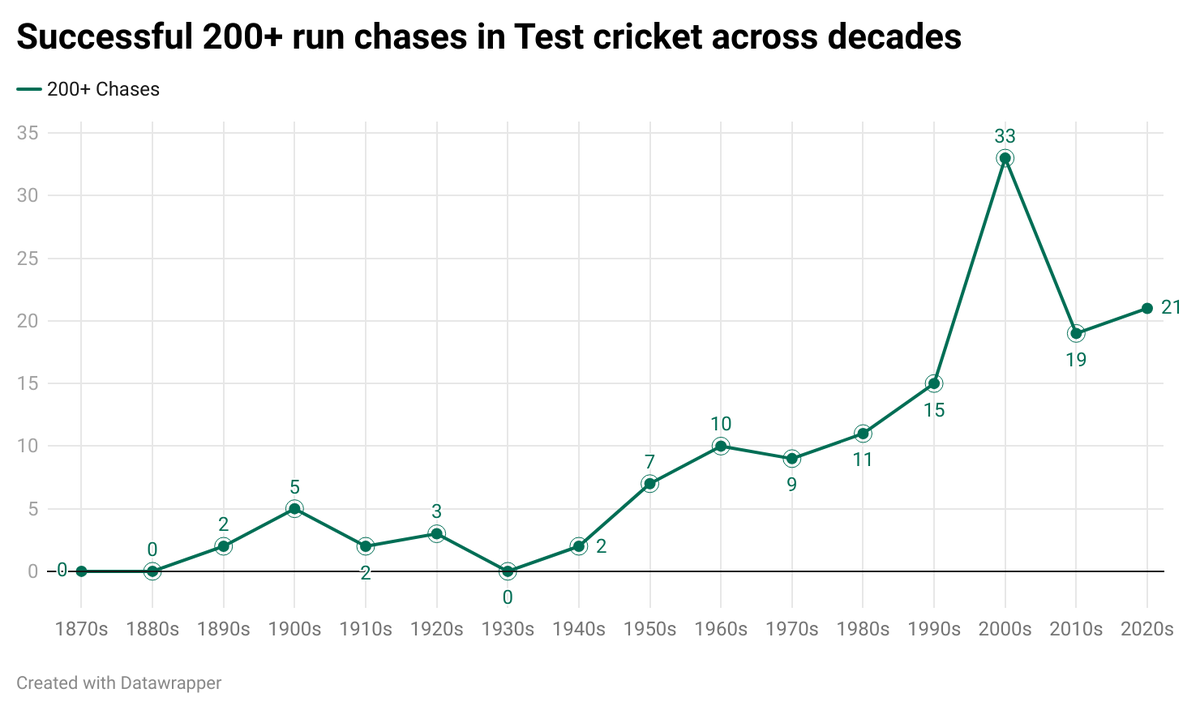
The 2010s saw a partial rebalancing, with juicier tracks and more bowler-friendly conditions resulting in just 19 such chases.
The current decade, however, has seen a resurgence: 21 successful 200-plus chases so far, with England accounting for eight of them.
England’s relentless charge with the bat on accommodating home pitches is unlikely to stop. The onus now lies with visiting teams: out-bat the host or out-think its batters to disrupt this dominance.







